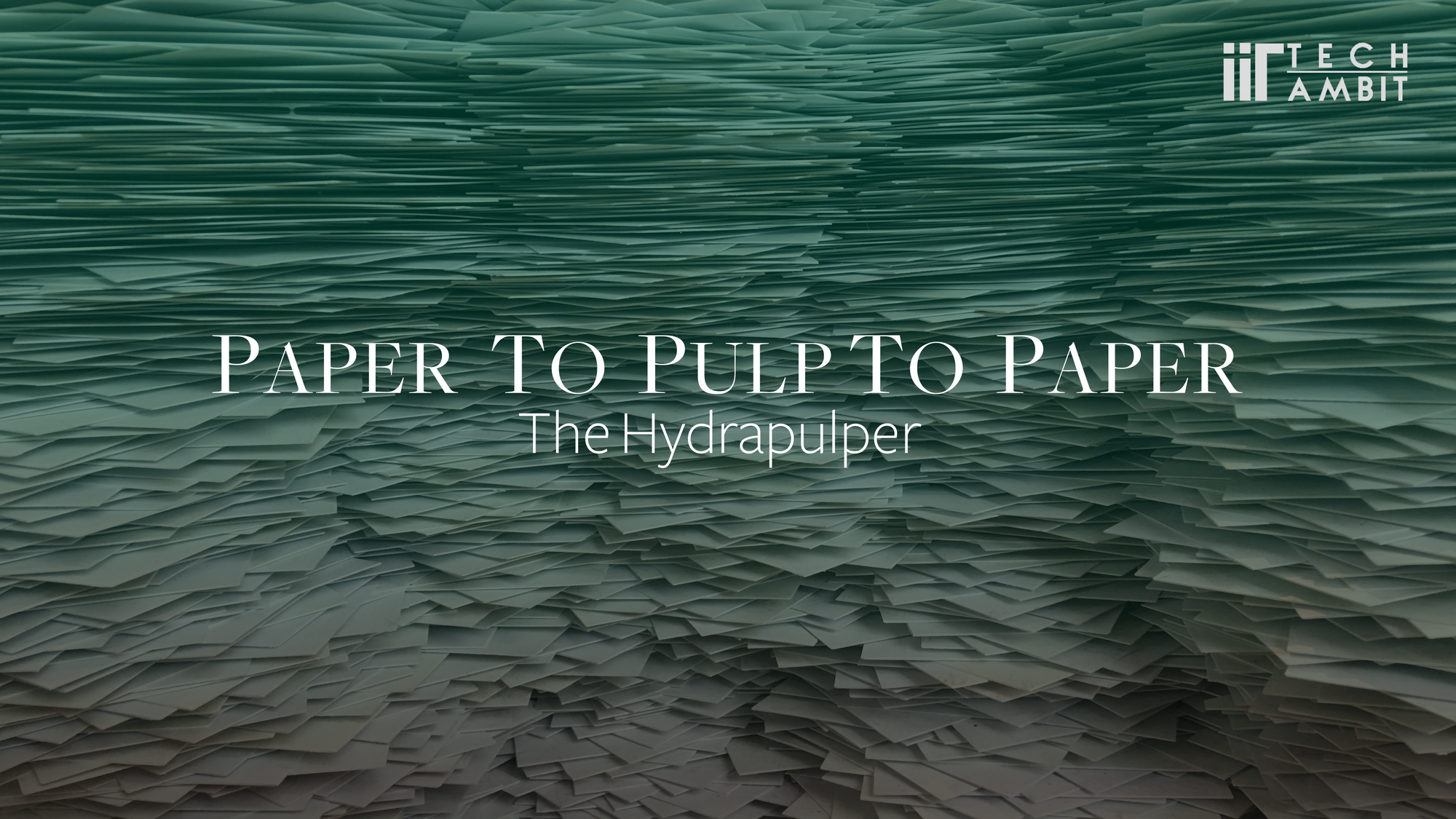According to Shred-it UK, a company that provides paper shredding services, it takes up to 70% less energy to recycle paper than to produce new paper from trees. However, paper recycling is being done in large industries and it is expensive to do it on a small scale.
Paper is made of cellulose fibres from various sources. In order to recycle paper, the fibres must be separated and made into a pulp. The properties of the pulp can be tweaked by adding chemicals according to the product that needs to be produced using the pulp. This is exactly what a group of students did at IIT Palakkad but on a smaller scale by building a device to recycle paper.
Under the supervision of Dr Dinesh Jagadeesan, an Assistant Professor in the Department of Chemistry at IIT Palakkad, a student team made the ‘Hydrapulper’. The team members are N. Poojitha (BTech Mechanical Engineering), MVS Bala Narasimha (BTech Electrical Engineering), K. Sai Deekshith (BTech Computer Science Engineering) and R. Rohith Reddy(BTech Electrical Engineering) who are now final year students.
The motivation behind the project
As part of the Csquare innovation programme (Csquare or Creation square is the innovation lab at IIT Palakkad), the group was given the problem statement: Converting waste paper into Papier-mâché. They came up with the Hydrapulper to solve this problem.
What is the Hydrapulper and how does it work?
It is a device where shredded paper soaked in water can be fed in and turned into pulp. With the addition of chemicals, the pulp can be used to make a number of products. The device consists of a container made of stainless steel in which a spiral blade is placed inside. A motor is used to transmit power and the shafts of the motor and the spiral blade are connected to a belt and pulley arrangement. Anti-Vibration pads were used and thus the wear and tear of the parts was reduced.
The spiral blade (which has an increasing radius) generates friction between adjacent layers which turns the shredded paper into the basic fibres which form the pulp. The pulp produced can be used to make paper or any products that are made using paper. About 1 kg of shredded paper can be recycled using 20L of water.
Challenges
The team had a budget of 10,000 INR to finish this project. They also had a strict deadline and had to complete the project in 45 days. According to the team, procuring the motor and fabricating the spiral blade were the hardest parts. Apart from these obstacles, they encountered several technical difficulties. There was wobbling and heavy vibrations when the device was running. This was due to the type of collar used in the shaft and the mass imbalance caused because the spiral blade was asymmetric.
The trial run
Using the chemicals alum and rosin (the team pointed out that similar chemicals can also be used) and the pulp made using the device, they were able to make a thick but brittle piece of paper. They weren’t able to figure out the exact composition of the chemicals needed to produce paper with better quality. The pulp can also be used like clay to make crafts by adding adhesives.

Improvements that can be made
Although the hydrapulper built was able to produce pulp, many improvements can be made to the design to keep improving the efficiency. For instance, instead of using the pulley and belt mechanism, a gearbox can be used. This would make the device more efficient. But due to budget constraints, the team wasn’t able to procure a gear box. Secondly, the device does take a long time to convert paper into pulp. It is possible that after optimizing the design of the hydrapulper, the process can be made less time consuming. If the hydrapulper can be marketed at a lower price, many paper products can be made which will serve as a source of income especially for the rural population.
The experience gained
As we all know, working on a project is not only about sharpening our technical skills; it teaches us a lot of soft skills.
The team worked on this project during their summer break after their second semester. So, it was not a surprise that they were quite inexperienced when it came to managing time and funds while working on relatively large projects compared to what they might have done previously during their school days.
When asked about the experience gained while working on the project, Poojitha, one of the team members said, "Working on this project helped us learn the skill of time management and also problem solving. The first prototype we built was not up to the mark and we had only 45 days to build the hydrapulper. So with improvisation and a lot of brainstorming, our team was finally able to build it”.
The team won the Csquare Innovation program in 2018 participating among 13 other teams who worked on other innovative projects. They showcased the hydrapulper by representing IIT Palakkad at the Unnat Bharat Abhiyan (Tech4Seva) conducted at IIT Delhi.
As of now, the team members have not planned to make any improvements to the device and market it. But they would like to work on it sometime and hopefully, make the hydrapulper available at an affordable cost in the market.

